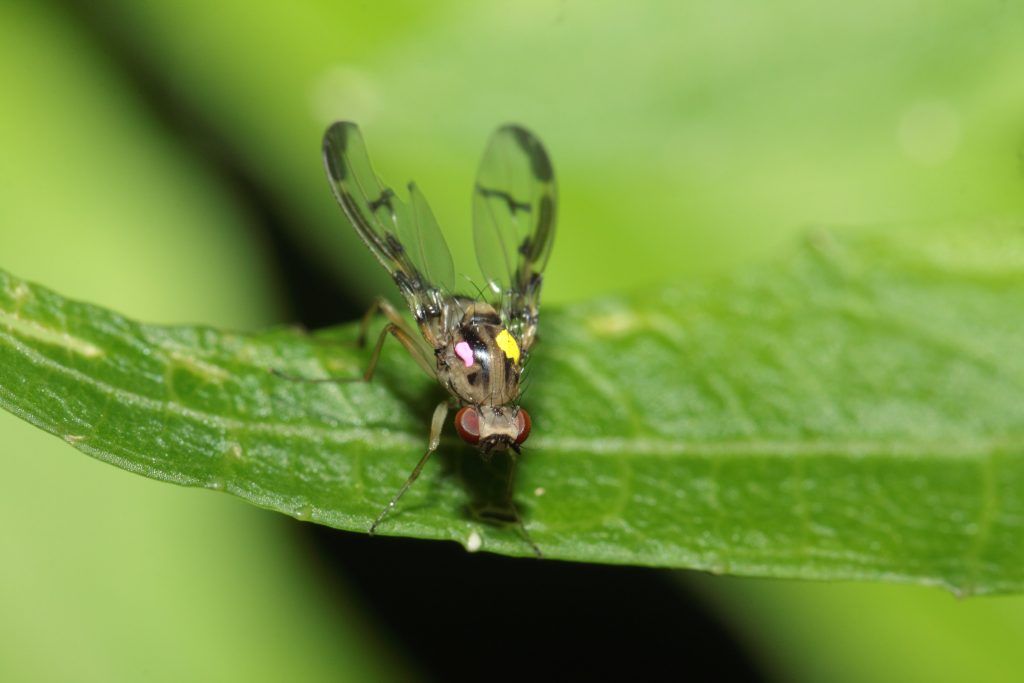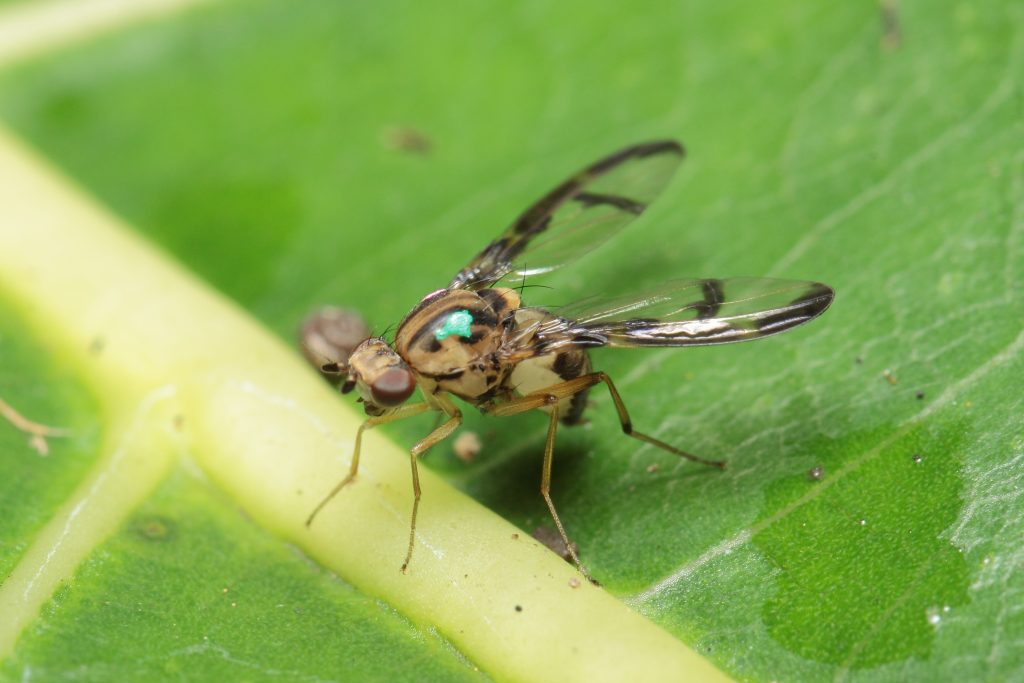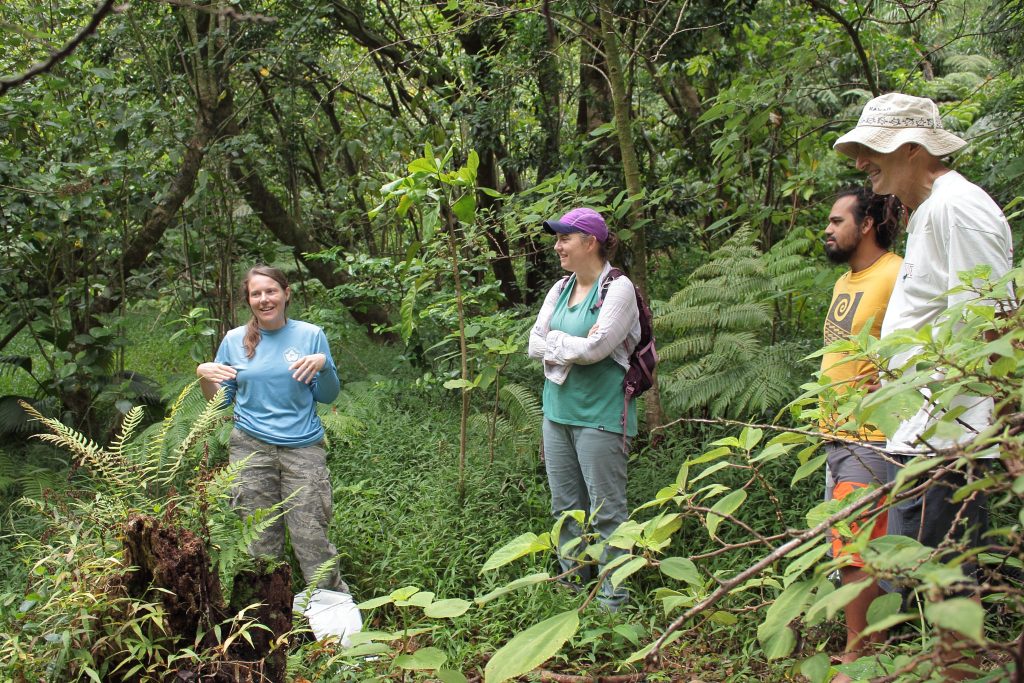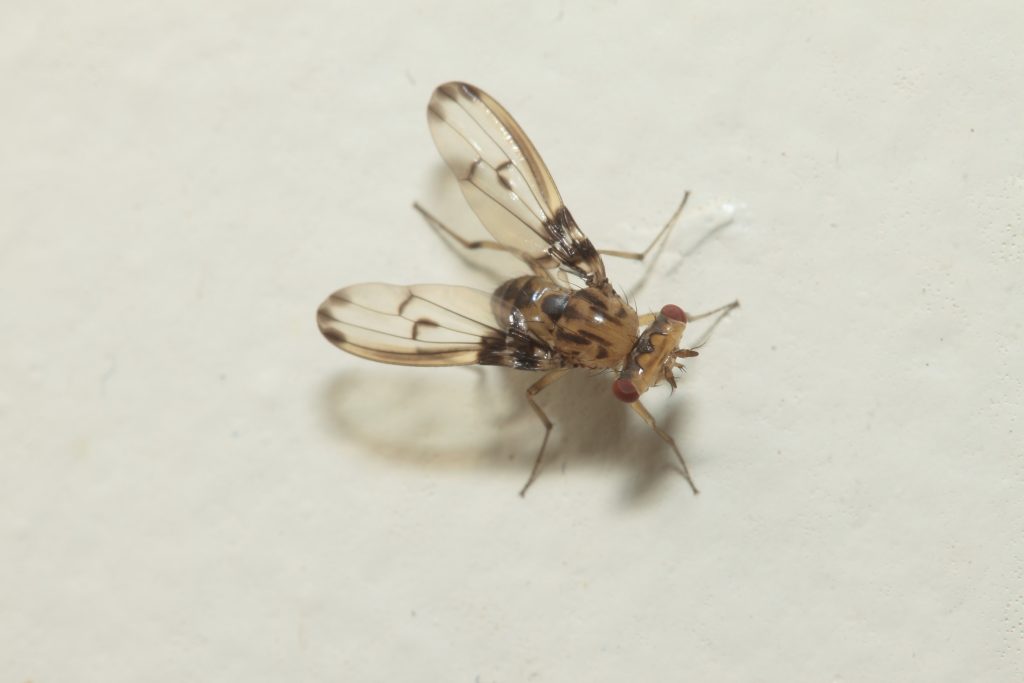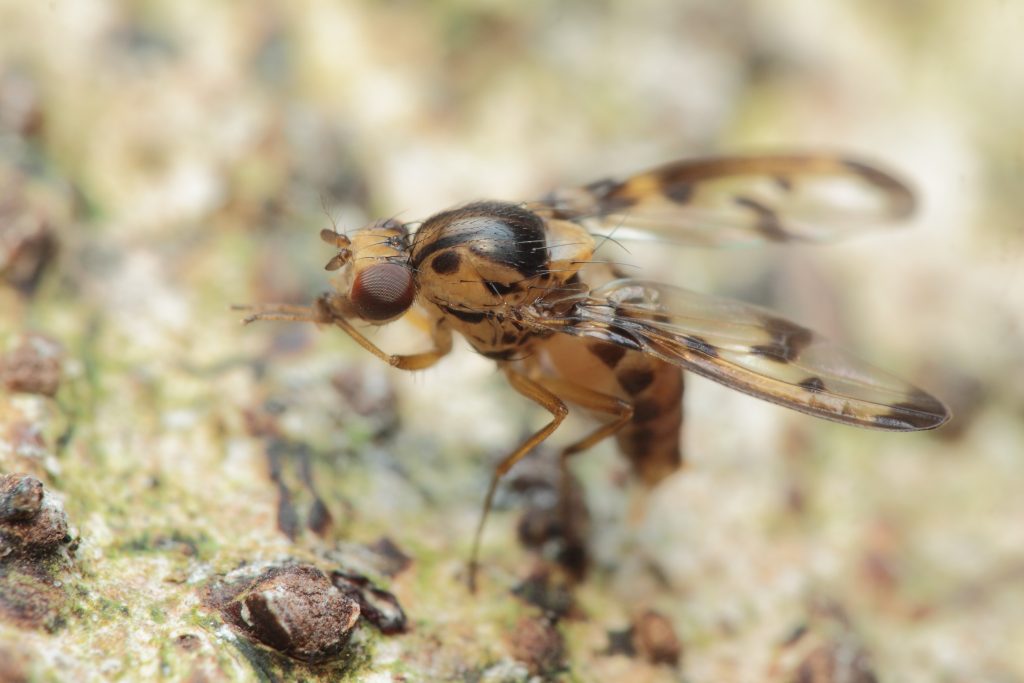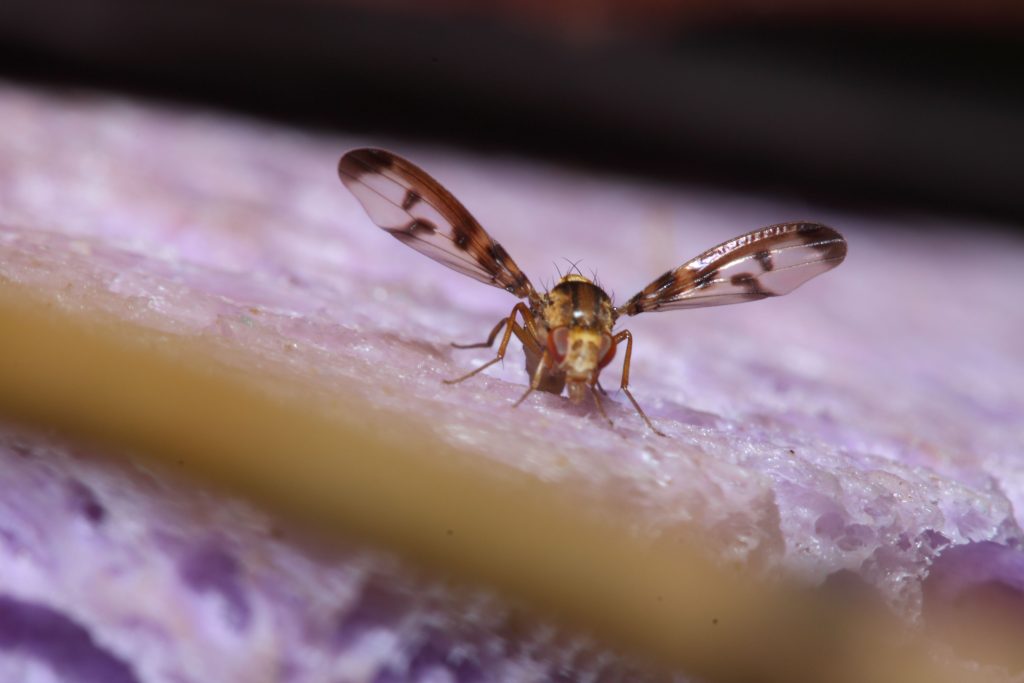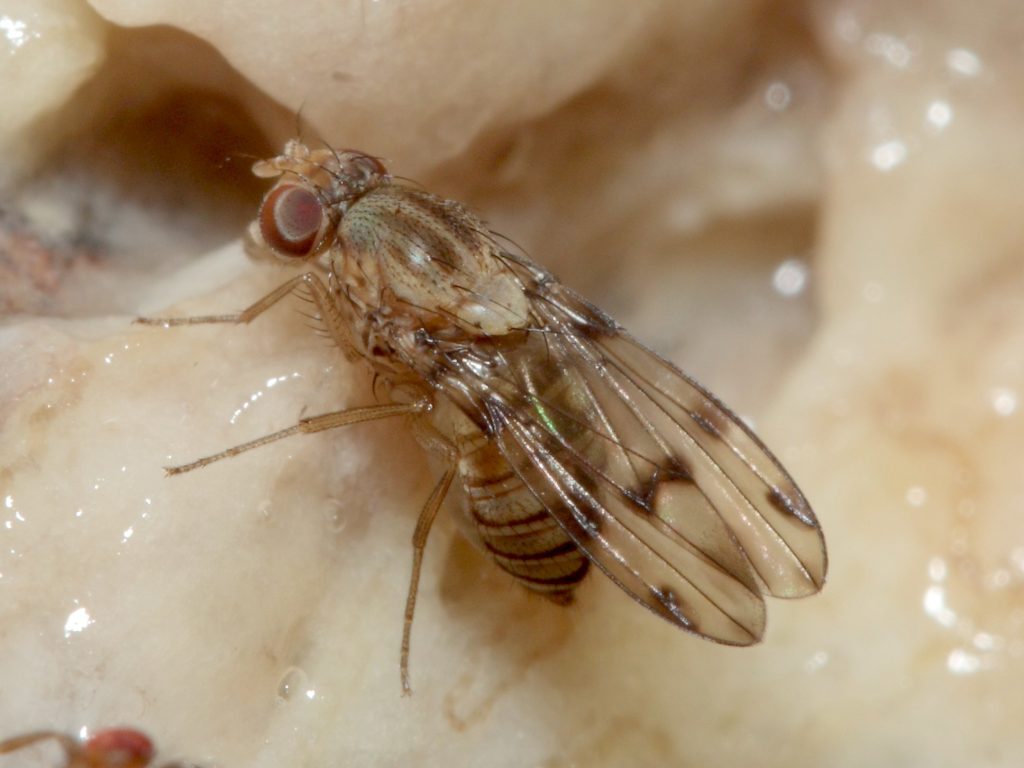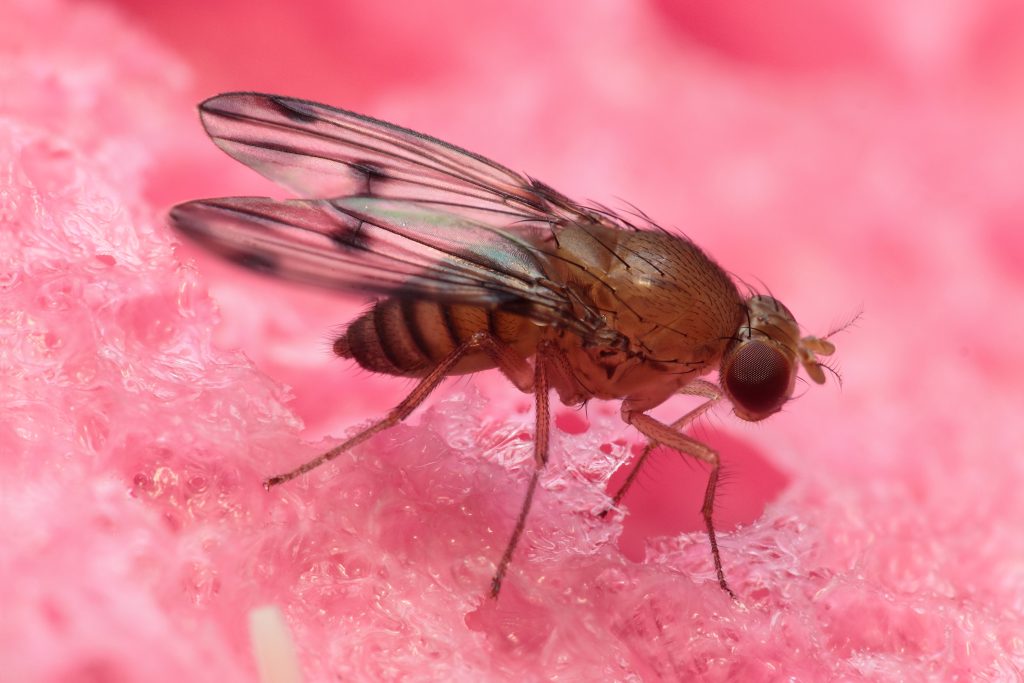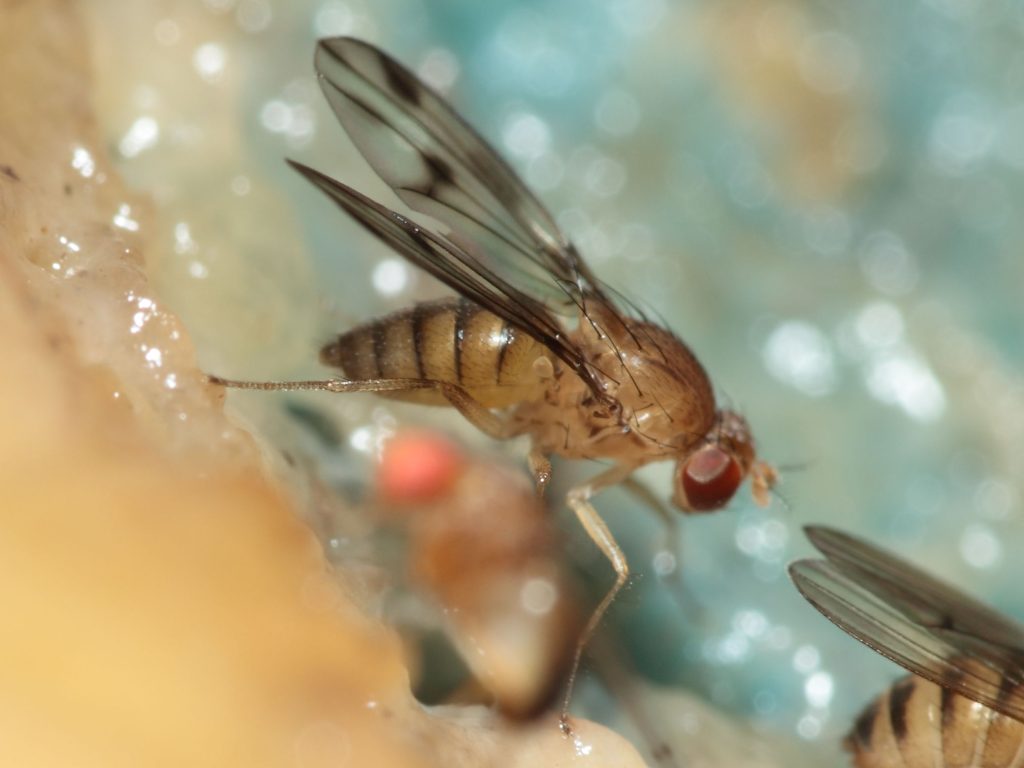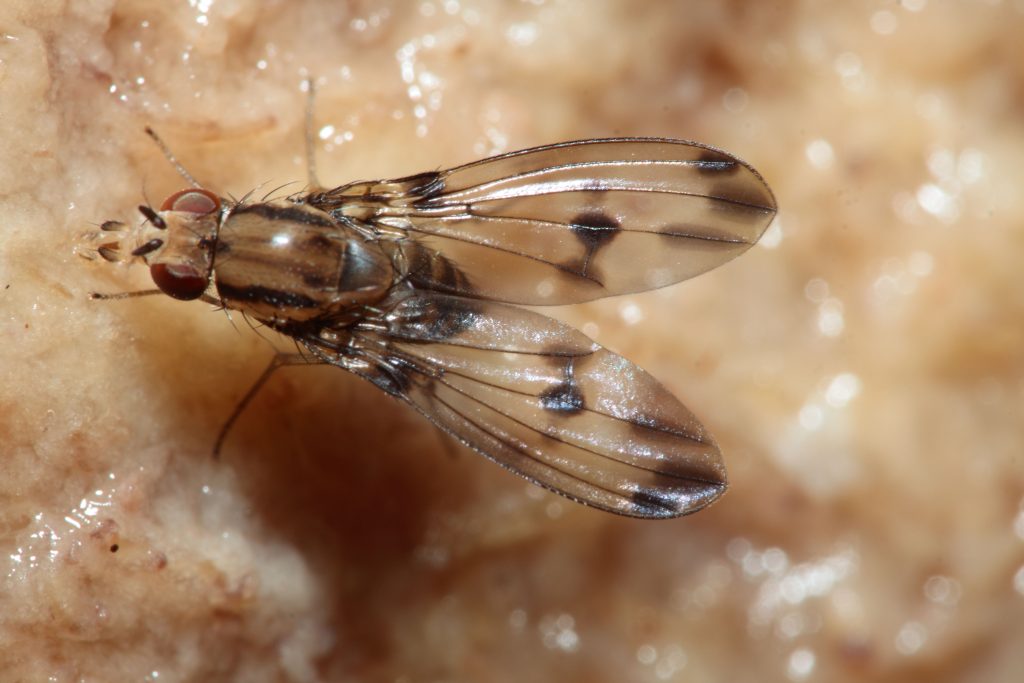Picture-winged flies

Conservation Status
Twelve species (Drosophila aglaia, D. differens, D. digressa, D. hemipeza, D. heteroneura, D. montgomeryi, D. mulli, D. musaphilia, D. neoclavisetae, D. obatai, D. ochrobasis, D. substenoptera, and D. tarphytrichia) are listed as endangered, and one (D. mulli) as threatened. Other species are rare and declining, and some have likely already gone extinct.
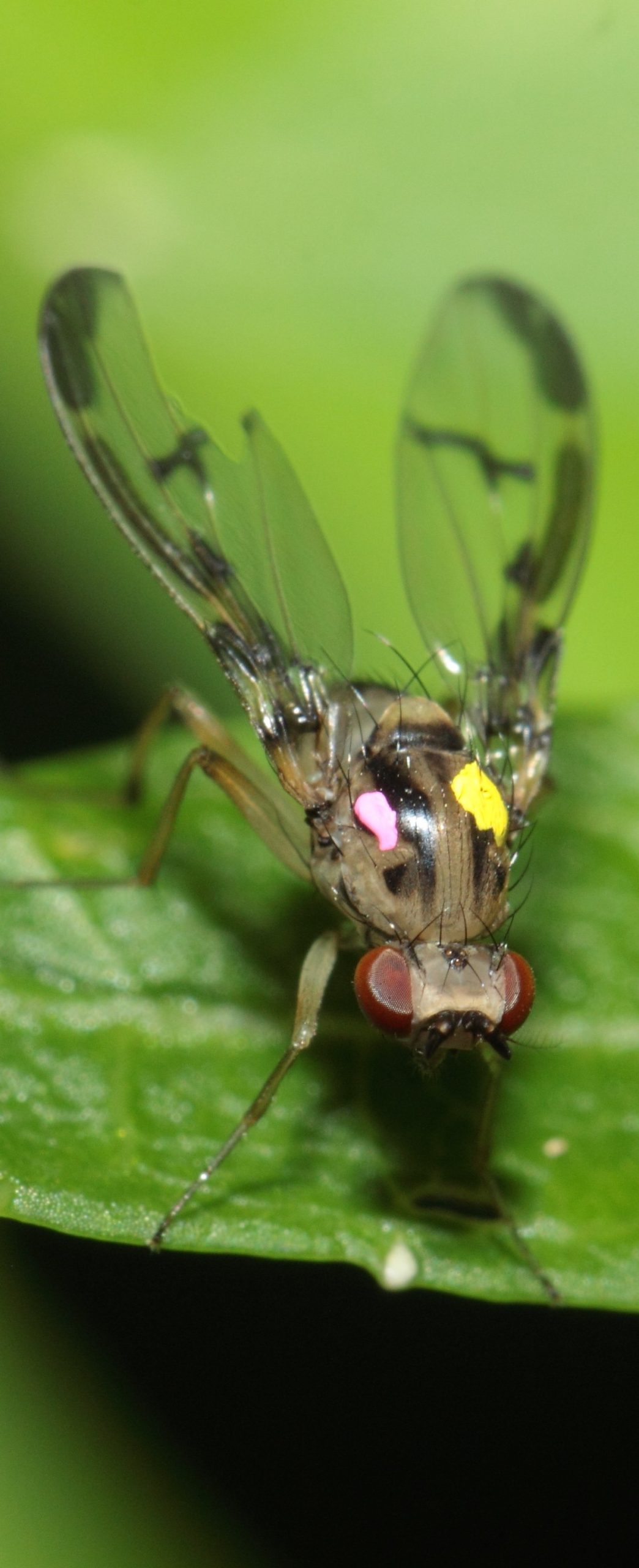
Drosophila hemipeza (tagged with paint for research). PC: Karl Magnacca
Species Information
Of the roughly 4,000 species in the family Drosophilidae, almost a quarter of them are endemic to Hawaiʻi. The family accounts for 10% of all Hawaiian insects. While some of those Hawaiian species are in the genus Scaptomyza, our most at-risk species are in the genus Drosophila and are referred to as picture-winged flies. Most species in this group are saprophagous, meaning they feed on yeasts and fungi present in decaying plant material (Ort et al. 2012). Hawaiian Drosophila have evolved a close association with approximately 40% of the native Hawaiian plant families and rely on these hosts to complete their life cycles (Magnacca et al. 2008). Drosophila have specialized in two major ways, with species groups showing preference for a specific plant part (e.g., leaves, fruit, flowers, stems, bark, sap flux) of that host plant, and individual species being specific to a given native plant family. (See our Pomace flies fact sheet for full citations)
Distribution
These flies were historically found throughout the Hawaiian Islands, but are now restricted to higher elevation habitats (1,500-6,000 ft) due to the introduction of ants and other invasive insects.
Habitat
All picture-winged Drosophila live in rotting bark or sap fluxes (areas where the bark is wet with sap) of native trees as larvae. They are generally host-specific, which means that they often rely on specific plants (or groups of plants) for habitat.
Threats
Hawaiian picture-winged Drosophila face compounding threats from invasive species (including predators like invasive ants or wasps), loss of habitat or host plants, and climate change.
Projects and Plans
The DLNR Division of Forestry and Wildlife, Hawaii Invertebrate Program is partnering with the University of Hawaii at Manoa to undertake captive rearing and reintroductions of select picture-wing species in hopes that such efforts will prevent additional extinctions.
Additional Resources
The fact sheets below, from our State Wildlife Action Plan, provide additional information about Pomace flies (the family Drosophilidae) and the threatened and endangered species of picture-winged flies.
